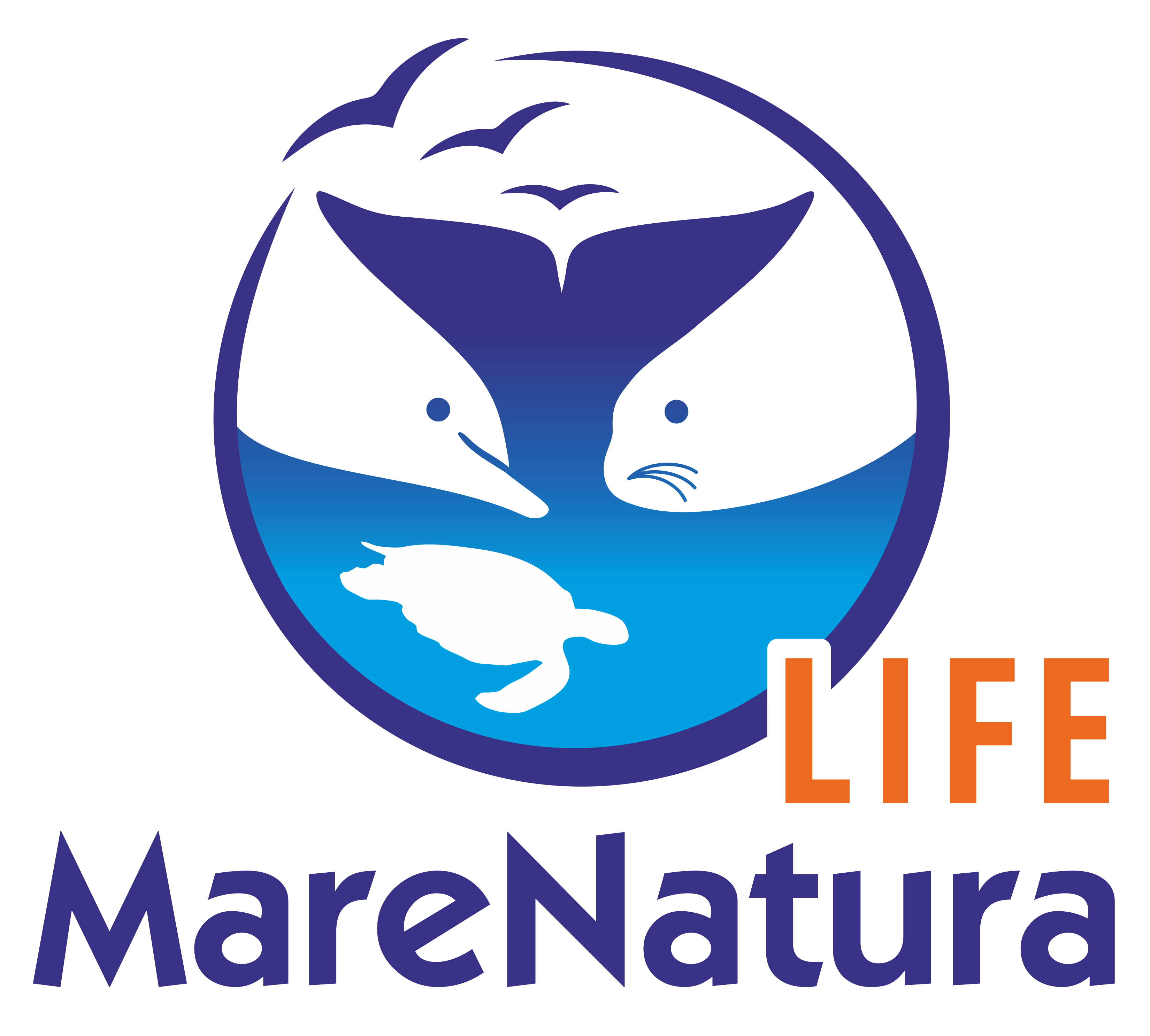Distribution – population
The Yelkouan Shearwater (Puffinus yelkouan) breeds in the central and eastern Mediterranean basin, mainly in Greece, Italy, France, and Malta. This pelagic seabird is related to and resembles the Scopoli’s Shearwater, the other pelagic seabird of Greece. They have similar habits, with the difference being that the Yelkouan Shearwaters typically fly in dense flocks close to the water surface, while the Scopoli’s shearwaters are more solitary. In the Aegean and Ionian islets, the breeding population was estimated at 6,830–13,200 breeding pairs in 2018, but by 2022-2023, the population had increased to 8,760–14,640 breeding pairs, due to the discovery of previously unknown colonies rather than a population increase (Kastritis et al. 2022). Due to decreased breeding success and a significant observed decline in the breeding population, the species is assessed as Vulnerable (VU) in Greece (NECCA 2023).
The breeding season extends from February to the end of summer. The Yelkouan Shearwater nests on the ground in caves and burrows found on steep cliffs and uninhabited islets (Fric and Portolou 2016). Towards the end of spring, the females lay their single egg of the year, which both parents incubate alternately for about six days each, totaling 50 days. A large portion of the population winters in the Black Sea, where most breeding individuals migrate at the end of the breeding season from August to October. Recent telemetry data from two significant colonies in the Aegean (Gyaros and Northern Dodecanese) indicate that the species forages in the Black Sea during breeding, which was not known until 2021 (HOS, LIFE PanPuffinus).
Threats
- Bycatch in fishing gear: Accidental catch of seabirds in nets or longlines can result in injury or drowning.
- Predation by introduced predators: Chicks and eggs are vulnerable to predation by introduced species such as rats, tranferred to uninhabited islets by humans. The most important breeding colony on the island of Gyaros has recorded a 33% egg loss due to rat predation (Fric and Portolou 2016).
- Degradation of colonies: Light pollution, noise pollution, and intense human activity on uninhabited islets, especially during the breeding season, can lead to breeding failure. Additionally, bright lights can disorient fledglings while leaving their nests, causing them to land onshore leading to increased chick predation and exposure to harsh climate conditions.
- Depletion of fish stocks due to overfishing.
- Marine pollution: Like all other marine species, Yelkouan Shearwaters often mistakenly consume plastic waste, become entangled in it, or accumulate microplastics through their food. Ingested plastics can break down within the seabirds’ bodies, causing toxic reactions, reduced physical condition, malnutrition, and even death. Heavy metals can also reduce reproductive success due to thinning eggshells, reduced clutch size, etc.
- Climate change: One of the most significant threats to seabirds, as they are long-lived species with low adaptability. Climate change effects include a reduction in plankton biomass, altering food web dynamics and the seasonality of prey availability and abundance.
- Renewable energy sources: The Aegean offers favourable conditions for developing renewable energy installations, which impact seabirds during both the installation and operation phases. Renewable energy installations create barriers during migration or daily foraging, displace populations from preferred resting and foraging sites, increase collision risks, especially near breeding colonies, cause degradation or loss of habitat, and cause significant disturbance from increased human presence among other factors.
Biology – ecology
Diet: The Yelkouan shearwater is a truly pelagic species, spending its entire life at sea and returning to land only to breed. It is a proficient swimmer, diving to depths of up to 45 metres! They travel great distances daily, searching for food in open pelagic areas. These trips last 1-7 days and can reach distances of up to 3,040-4,000 km away from the colony. Their preferred prey includes small fish such as anchovies and sardines, as well as other marine species like squid, octopus, and shrimp. They often follow pods of dolphins and whales that push large schools of fish to the surface when hunting, as well as fishing boats. This behaviour often leads to bycatch in fishing gear, especially just before returning to their colonies to lay their single egg.
Body length: up to approximately 30-35 cm
Weight: 330-480 grams
Wingspan: 0.70-0.85 meters
Number of eggs/nest: 1 single egg per breeding season!
Diving depth: up to 40 meters!



 Ελληνικά
Ελληνικά Italiano
Italiano